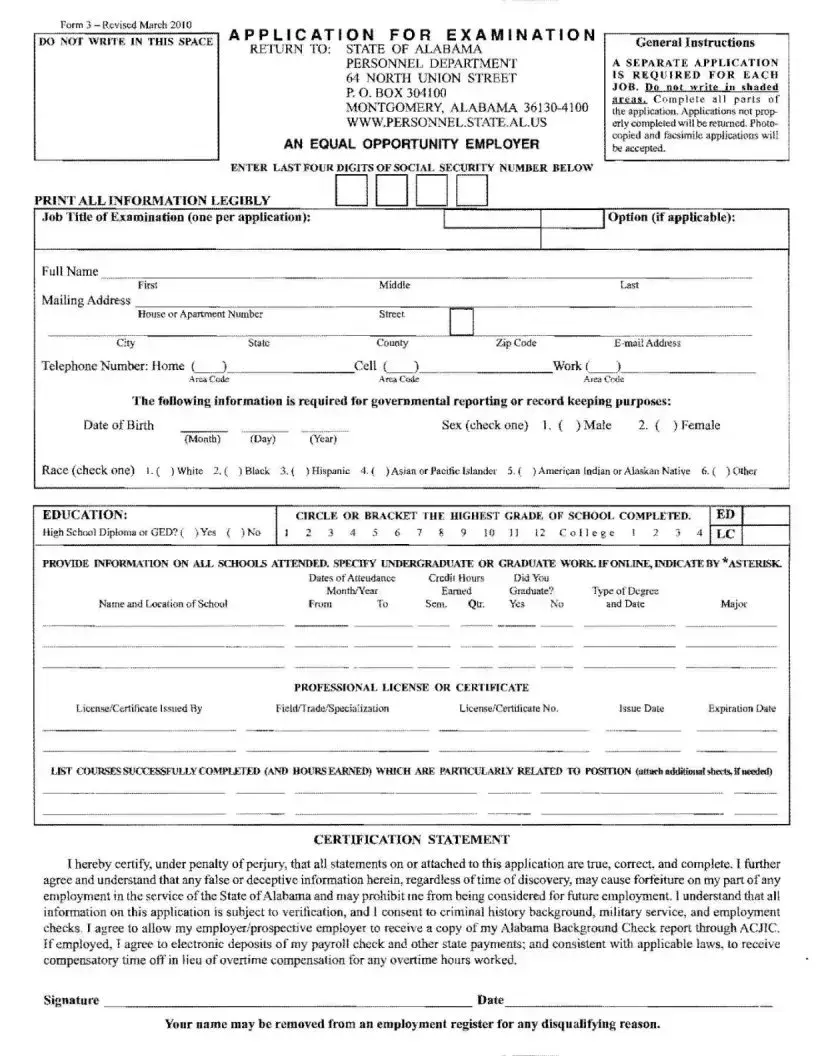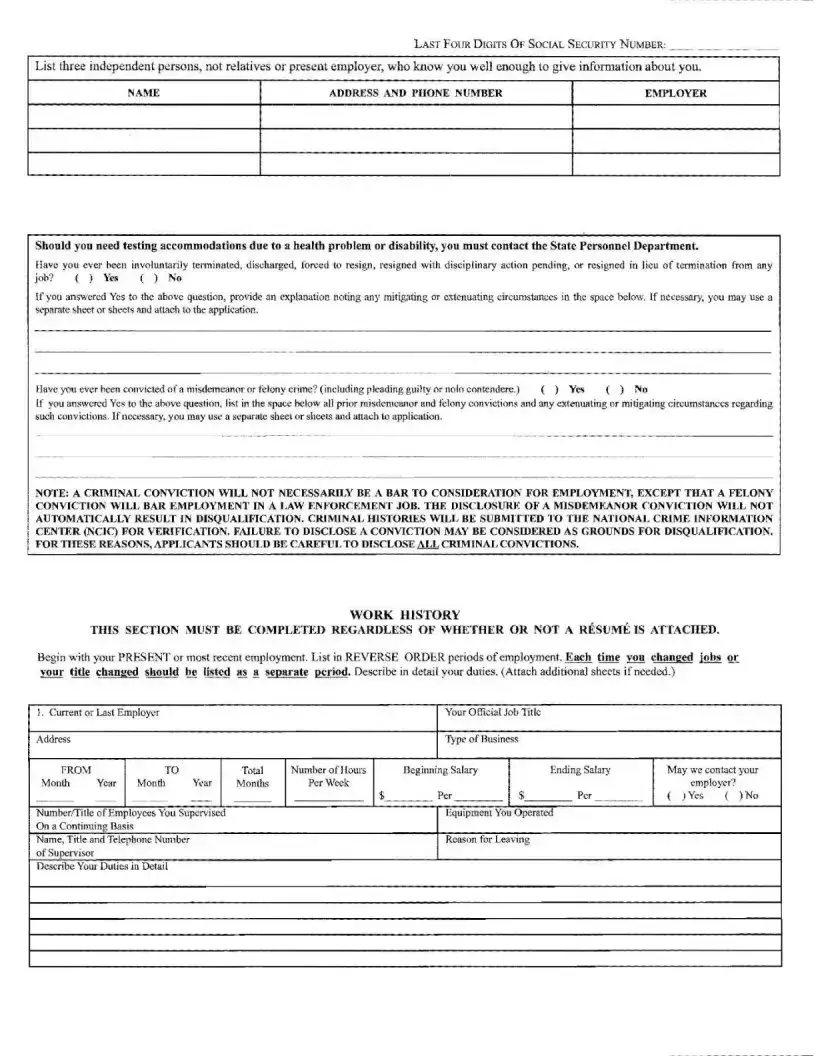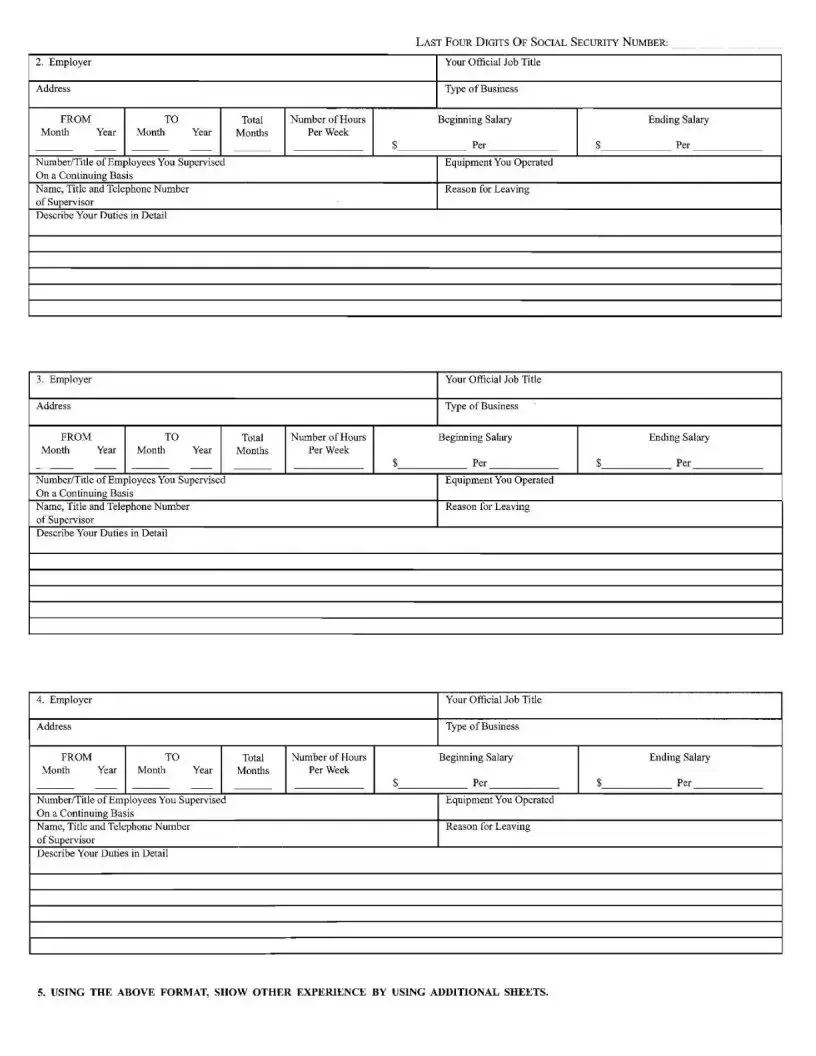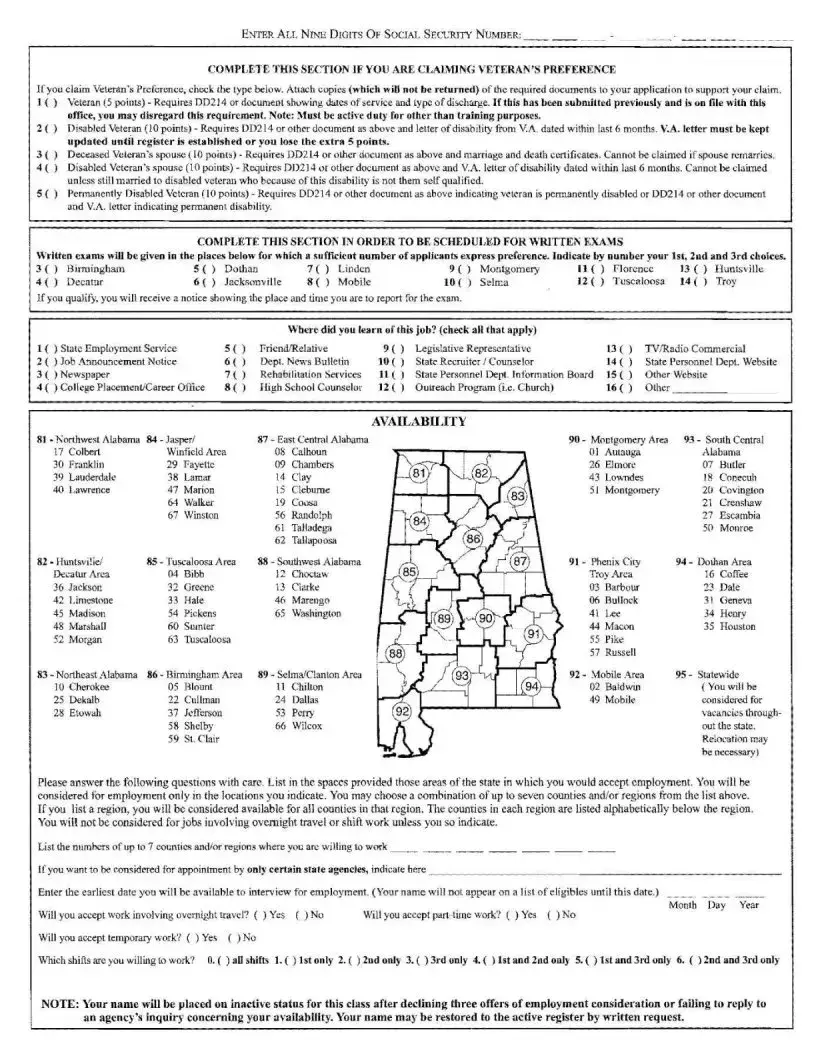What is the Alabama 3 form used for?
The Alabama 3 form is primarily utilized for the registration and titling of various types of vehicles within the state of Alabama. This includes, but is not limited to, cars, trucks, motorcycles, and trailers. It ensures that the vehicle is legally recognized by the state, providing a legal framework for ownership, taxation, and identification purposes.
Who needs to file an Alabama 3 form?
Individuals or businesses possessing vehicles that are to be operated on Alabama roads must file the Alabama 3 form. This requirement is applicable immediately upon purchasing a vehicle or when bringing a vehicle into Alabama from another state with the intention of establishing residency or conducting business.
Where can one obtain an Alabama 3 form?
The form can be sourced directly from the Alabama Department of Revenue's website. Additionally, it is available at local county tag and title offices throughout Alabama. Individuals seeking person-to-person assistance in completing the form may find these offices particularly helpful.
Is there a deadline for submitting the Alabama 3 form?
Yes, there is a specific timeframe within which the Alabama 3 form must be submitted. Typically, this is within 20 days following the acquisition of a vehicle, or upon establishing residency in Alabama. Failing to adhere to this deadline may result in late fees or penalties.
What documents are required to accompany the Alabama 3 form?
Submitting the Alabama 3 form requires several accompanying documents. This includes proof of vehicle ownership, such as a title or manufacturer's certificate of origin, proof of Alabama residency, a valid Alabama driver's license, and proof of insurance. The specific requirements may vary depending on the vehicle type and transaction details.
Can the Alabama 3 form be submitted electronically?
As of the latest update, the Alabama Department of Revenue permits the electronic submission of the Alabama 3 form for certain transactions. However, this service is not universally available for all vehicle-related transactions. It is advisable to check the Department's official website or consult directly with local county offices for more details regarding electronic submission options.
What are the consequences of not filing the Alabama 3 form?
Failing to file the Alabama 3 form can result in a variety of legal and financial consequences. This includes the impossibility to legally operate the vehicle on Alabama roads, potential fines, and penalties. Additionally, it may complicate legal proceedings involving the vehicle, such as ownership disputes or claims. It is crucial to comply with the Alabama 3 form requirements to ensure seamless vehicle use and ownership within the state.



